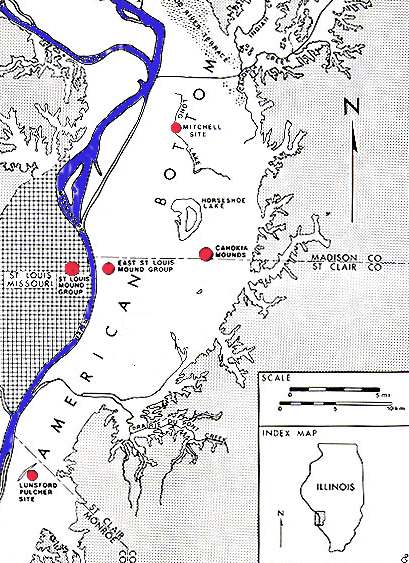
Distribution of major mound centers (red dots) in the American Bottom. Other towns
with one or a few mounds are not indicated.
While it is true that we should expect to see more religious and civic activity in larger settlements (see for example the variation in sweatlodge size), we want to know to what extent these activities integrated the local farmsteads, hamlets, villages, and towns with Cahokia. That is, do these mound villages and mound towns represent largely autonomous chiefdoms serving the needs of their inhabitants and those of nearby farmsteads, hamlets and nodal settlements? Or, were they part of a highly integrated society where surpluses were passed up the hierarchy from farmstead to hamlet to nodal settlement to village to town and finally to Cahokia, and where directions from the Cahokia elite passed down through lesser chiefs or other members of the elite assigned some socio-political responsibilities (functionaries of the chief) in towns to village leaders to the nodal settlements, hamlets and finally individual farmsteads?